Martin Antonenko
A Fixture
- Joined
- Jul 11, 2008
- Messages
- 8,805
Millennial Russia ...!
On September 8th, 1862, in the city of Welikije Novgorod (= "Great Novgorod") in the presence of Tsar Aleksandr II, the "Monument to Millennial Russia" was inaugurated ...:
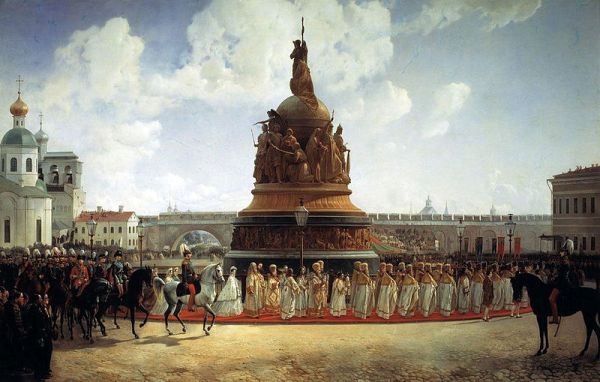

40 sculptors and architects initially took part with their projects in an invitation to tender issued in 1859. The choice fell on the 24-year-old and at that time little-known draftsman Mikhail Mikeschin, who had just completed his studies at the art academy a year earlier.
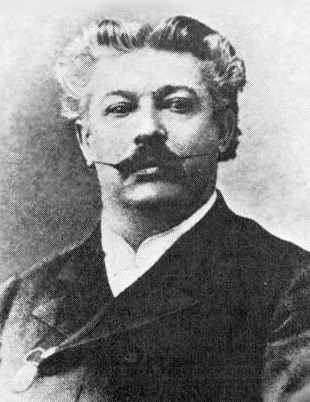
His submitted project consisted of a large number of partial drawings of the individual fragments of the future monument - and this model ...:
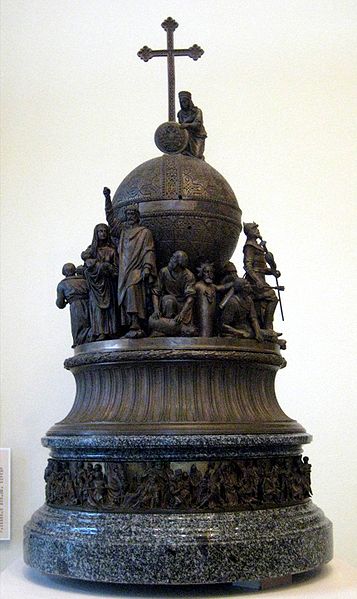
Here is a picture from the construction phase in 1862 ...:
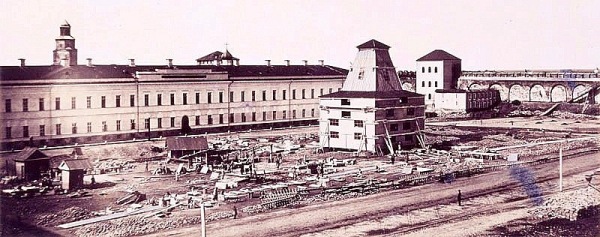
For the creation of the monument, government circles and Tsar Alexander II demanded a proper presentation of both the history of Russia and the role of the ruling house of Romanov.
In addition, the project reflects the contemporary transition from classicism to realism.
While the upper part with the angel and the allegorical personification of Russia still follows the classical style, the lower part is characterized by realistically depicted people.
After the October Revolution, in 1925, an order came from Moscow to demolish the “Monument to Orthodoxy and Tsarism”.
However, the local authorities decided to "hide" the monument. A construction made of wooden boards was erected around it, on which various revolutionary posters and banners were hung. It also served occasionally as a speaking platform at local gatherings ...:
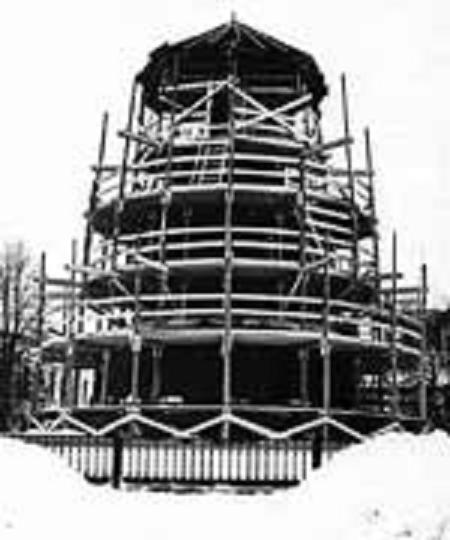
Failure to comply with an order from the "headquarters" in the Kremlin was life-threatening at the time and shows only too clearly the loyalty of the Novgorodians to their monument - completely irrelevant whether Bolshevik or not!
So the memorial survived until the Germans came!
On August 15, 1941, Novgorod was occupied by the German Wehrmacht. General Kurt Herzog ...
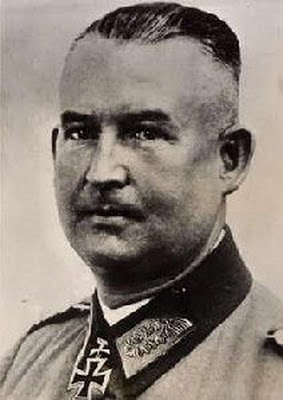
... Kommandierender General of the XXXVII. German Armeekorps, which belonged to the siege troops around Leningrad, ordered the monument to be dismantled and the individual parts shipped to Germany as a trophy for victory.
A little premature, as we know today.
In December 1943, the Germans began to saw the monument up.
However, Novgorod was liberated by the Red Army on January 20, 1944...:

At that point the monument was a sad sight!
The pedestal was absolutely empty except for the remains of the imperial orb, the large, damaged figures on the middle level were scattered in the snow across the Kremlin Square.

The three-meter-high cross lay bent on the floor. Many details such as swords, sceptres or shields had disappeared without a trace ...:
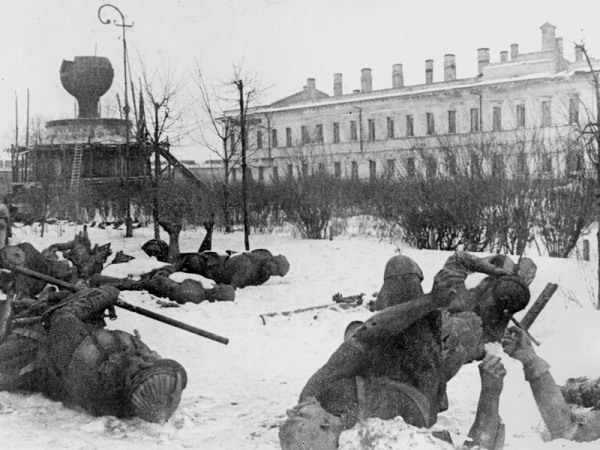
**continued next post**
On September 8th, 1862, in the city of Welikije Novgorod (= "Great Novgorod") in the presence of Tsar Aleksandr II, the "Monument to Millennial Russia" was inaugurated ...:


40 sculptors and architects initially took part with their projects in an invitation to tender issued in 1859. The choice fell on the 24-year-old and at that time little-known draftsman Mikhail Mikeschin, who had just completed his studies at the art academy a year earlier.

His submitted project consisted of a large number of partial drawings of the individual fragments of the future monument - and this model ...:

Here is a picture from the construction phase in 1862 ...:

For the creation of the monument, government circles and Tsar Alexander II demanded a proper presentation of both the history of Russia and the role of the ruling house of Romanov.
In addition, the project reflects the contemporary transition from classicism to realism.
While the upper part with the angel and the allegorical personification of Russia still follows the classical style, the lower part is characterized by realistically depicted people.
After the October Revolution, in 1925, an order came from Moscow to demolish the “Monument to Orthodoxy and Tsarism”.
However, the local authorities decided to "hide" the monument. A construction made of wooden boards was erected around it, on which various revolutionary posters and banners were hung. It also served occasionally as a speaking platform at local gatherings ...:

Failure to comply with an order from the "headquarters" in the Kremlin was life-threatening at the time and shows only too clearly the loyalty of the Novgorodians to their monument - completely irrelevant whether Bolshevik or not!
So the memorial survived until the Germans came!
On August 15, 1941, Novgorod was occupied by the German Wehrmacht. General Kurt Herzog ...

... Kommandierender General of the XXXVII. German Armeekorps, which belonged to the siege troops around Leningrad, ordered the monument to be dismantled and the individual parts shipped to Germany as a trophy for victory.
A little premature, as we know today.
In December 1943, the Germans began to saw the monument up.
However, Novgorod was liberated by the Red Army on January 20, 1944...:

At that point the monument was a sad sight!
The pedestal was absolutely empty except for the remains of the imperial orb, the large, damaged figures on the middle level were scattered in the snow across the Kremlin Square.

The three-meter-high cross lay bent on the floor. Many details such as swords, sceptres or shields had disappeared without a trace ...:

**continued next post**


























